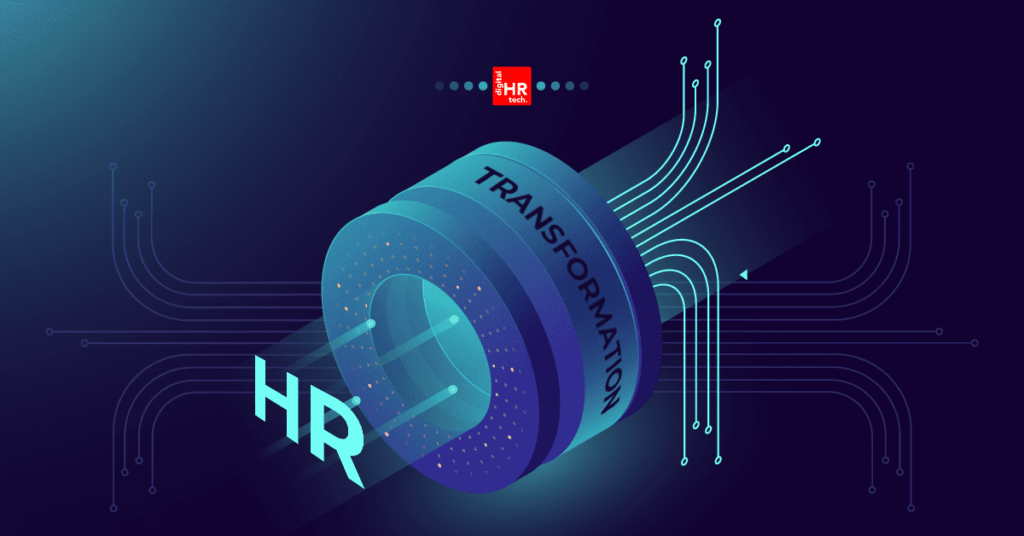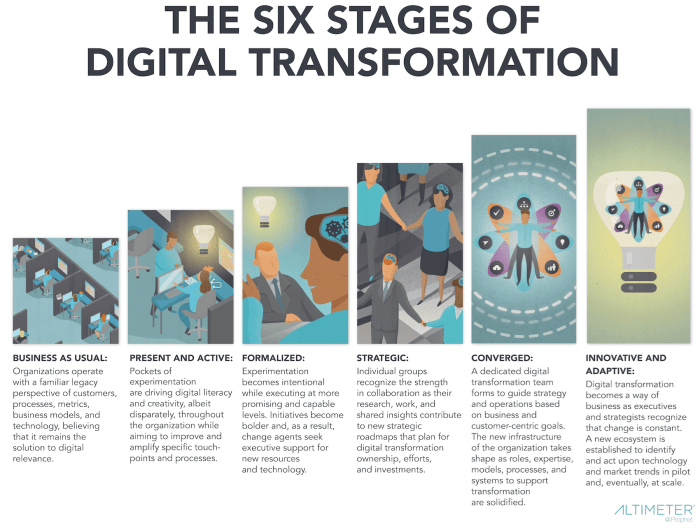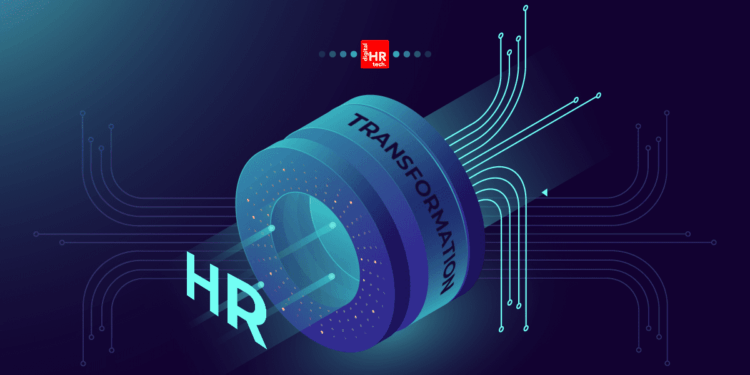
Embark on a journey from traditional HR practices to modern digital solutions with From Legacy to Digital: HR Transformation Made Simple. This exploration delves into the significance of embracing digitalization in HR processes and the benefits it can bring to organizations.
As we navigate through the intricacies of HR transformation, we uncover key challenges faced by businesses, the advantages of adopting digital HR systems, steps to achieve a successful transformation, and the role of emerging technologies in shaping the future of HR practices.
Introduction to HR Transformation
HR transformation refers to the process of modernizing and digitalizing human resources practices within an organization. This involves transitioning from traditional, paper-based systems to automated, data-driven solutions.
It is crucial for businesses to embrace HR transformation as it can lead to increased efficiency, streamlined processes, and improved employee experience. By leveraging digital tools and technologies, organizations can optimize their HR functions and better meet the evolving needs of their workforce.
Benefits of HR Transformation
- Improved Employee Engagement: Digital HR solutions enable easier communication, feedback, and recognition, fostering a more engaged workforce.
- Enhanced Data Management: Transitioning to digital systems allows for better data collection, analysis, and decision-making in HR processes.
- Cost Savings: Automation of repetitive tasks and workflows can reduce operational costs and free up HR professionals to focus on strategic initiatives.
- Increased Compliance: Digital HR systems help ensure compliance with regulations and standards through automated tracking and reporting.
Key Challenges in Legacy HR Systems
Legacy HR systems pose several challenges for organizations, hindering their growth and efficiency. These challenges can range from outdated technology to lack of integration with modern tools, impacting overall HR functions and employee experience.
Lack of Automation
Legacy HR systems often lack automation capabilities, leading to manual and time-consuming processes for tasks such as payroll, benefits administration, and performance management. This can result in increased errors, delays, and inefficiencies in HR operations.
Data Security Risks
With legacy systems, organizations face higher risks of data breaches and security vulnerabilities. Outdated technology may not have the necessary security features to protect sensitive employee information, exposing the company to potential compliance issues and reputational damage.
Limited Analytics and Reporting
Legacy HR systems may not offer robust analytics and reporting functionalities, making it difficult for HR departments to gather actionable insights from data. This lack of visibility into key HR metrics can hinder decision-making processes and strategic planning for talent management.
Lack of Mobile Accessibility
In today's digital age, employees expect seamless access to HR tools and information on their mobile devices. Legacy systems that are not mobile-friendly restrict employees from accessing important HR resources anytime, anywhere, impacting overall employee engagement and satisfaction.
Integration Challenges
Legacy HR systems often struggle to integrate with other business applications and tools, causing data silos and inefficiencies in cross-functional processes. This lack of integration can hinder collaboration between departments and result in disjointed workflows within the organization.
Advantages of Digital HR Transformation

Transitioning to a digital HR system offers numerous advantages for organizations looking to streamline their human resource processes and improve overall efficiency.
Increased Efficiency and Productivity
- Digital HR solutions automate repetitive tasks, freeing up HR staff to focus on more strategic initiatives.
- Employees can easily access information and complete tasks online, reducing the time spent on administrative work.
- Real-time data and analytics provide insights for better decision-making and resource allocation.
Enhanced Employee Experience
- Self-service portals allow employees to update personal information, request time off, and access training materials conveniently.
- Mobile applications enable remote access to HR services, catering to the needs of a modern, mobile workforce.
- Personalized communication and feedback mechanisms improve employee engagement and satisfaction.
Cost Savings and Compliance
- Reduced paperwork and manual processes lead to cost savings in terms of time and resources.
- Automated compliance checks and reporting help organizations stay up-to-date with regulatory requirements.
- Centralized data storage ensures data security and privacy compliance.
Case Studies
Company A implemented a digital HR system and saw a 30% decrease in administrative tasks, allowing HR to focus on talent development.
Company B improved employee retention rates by 15% after introducing self-service tools and personalized training recommendations through their digital HR platform.
Steps to Achieve a Successful HR Transformation
In order to successfully transition from legacy to digital HR systems, organizations need to follow a structured approach that involves key steps and considerations. Change management plays a crucial role in ensuring a smooth transformation process, while having a clear roadmap helps in guiding the organization through the transition effectively.
Assessment of Current HR Systems
Before embarking on the transformation journey, it is essential to conduct a thorough assessment of the current HR systems in place. This includes evaluating the functionality, efficiency, and limitations of the existing legacy systems to identify areas that need improvement.
Define Objectives and Goals
Once the assessment is complete, organizations should define clear objectives and goals for the HR transformation. These objectives should be aligned with the overall business strategy and should focus on improving efficiency, enhancing employee experience, and driving organizational growth.
Selection of Digital HR Solutions
After defining the objectives, the next step involves selecting the right digital HR solutions that meet the organization's requirements. This may include implementing cloud-based HR software, automation tools, and analytics platforms to streamline HR processes and drive innovation.
Implementation and Training
Once the digital HR solutions are selected, the implementation phase begins. It is crucial to provide adequate training and support to employees to ensure a smooth transition to the new systems. Change management practices should be implemented to address any resistance to change and ensure employee buy-in.
Monitoring and Evaluation
After the implementation phase, organizations need to continuously monitor and evaluate the effectiveness of the new digital HR systems. This involves collecting feedback from users, analyzing key metrics, and making necessary adjustments to optimize the performance of the HR transformation.
Continuous Improvement
HR transformation is an ongoing process, and organizations should focus on continuous improvement to stay competitive and meet evolving business needs. Regularly reviewing and updating digital HR systems, incorporating feedback, and adopting new technologies are essential for long-term success.
Emerging Technologies in HR Transformation
Artificial intelligence (AI) and automation play a significant role in modern HR practices by streamlining repetitive tasks, improving accuracy, and enhancing employee experience. Data analytics, on the other hand, enables HR professionals to make data-driven decisions, identify trends, and predict future outcomes.
Cloud-based HR solutions offer scalability and flexibility, allowing organizations to adapt to changing needs quickly.
Role of Artificial Intelligence and Automation
AI and automation are revolutionizing HR processes by automating routine tasks such as resume screening, scheduling interviews, and onboarding new hires. These technologies can also analyze large datasets to identify patterns and insights that help in recruitment, performance evaluation, and employee engagement.
Importance of Data Analytics in HR Decision-making
Data analytics empowers HR teams to make informed decisions based on insights derived from employee data. By analyzing metrics related to recruitment, retention, performance, and engagement, organizations can optimize their HR strategies, improve employee satisfaction, and drive business growth.
Advantages of Cloud-based HR Solutions
Cloud-based HR solutions offer scalability and flexibility, allowing organizations to access HR tools and data from anywhere at any time. These solutions also provide seamless integration with other business systems, enhanced security measures, and automatic updates, ensuring that HR processes remain efficient and compliant with regulations.
Conclusion
In conclusion, From Legacy to Digital: HR Transformation Made Simple illuminates the path towards a more efficient and effective HR framework. By embracing digital transformation, organizations can enhance their operations, decision-making processes, and overall scalability in the ever-evolving business landscape.
Top FAQs
What are the benefits of transitioning to a digital HR system?
Transitioning to a digital HR system can streamline processes, improve data accuracy, enhance employee experience, and provide real-time insights for better decision-making.
How important is change management during the HR transformation process?
Change management is crucial during HR transformation to ensure smooth transitions, address resistance to change, and maximize the effectiveness of the new digital systems.
What emerging technologies play a key role in modern HR practices?
Artificial intelligence, automation, data analytics, and cloud-based solutions are some of the emerging technologies revolutionizing HR practices and enhancing organizational efficiencies.













